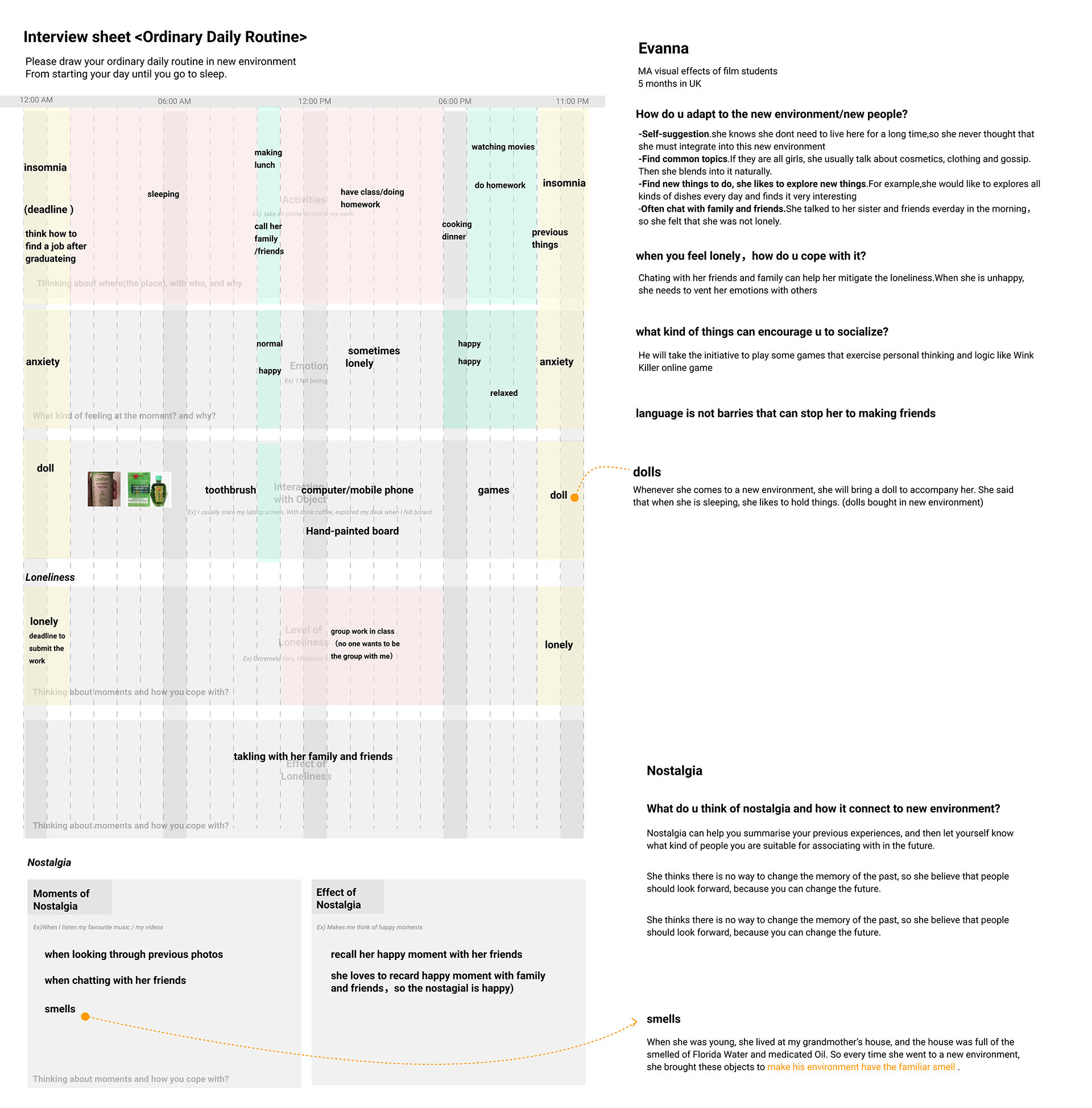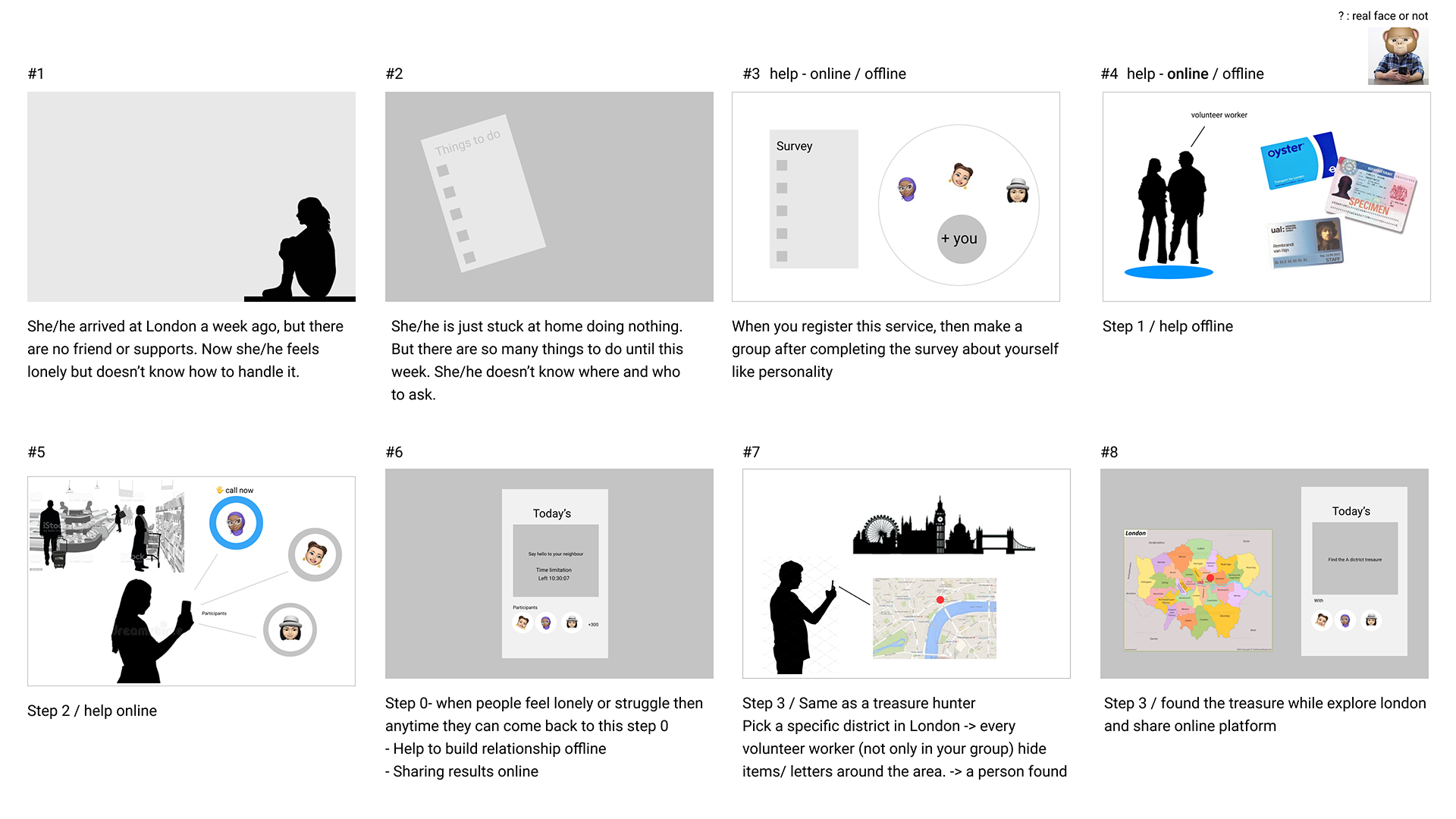AR Geocaching — W4
Designers | Damul Yang • David Han • Maria C • Rikkie • Sue Heeyeon An
External Partner | R/GA
Brief | Design a way to mitigate the effects of loneliness
Research
Our group decided to do another round of Directed Storytelling with the target audiences’,international students to get a better understanding experiences of nostalgia - scoping the moments and the effects of it. Also including their daily routine, how their emotion alters throughout the day. To do this, we have created a document that asks about activities, interactions (with the environment/object), emotion and the intensities of it. We spoke with 7 people in total and afterwards we merged the results based on the timeline of the day to find out the commonalities. We found out people were unconsciously trying to find something familiar or similar with their home countries. Moreover, becoming more introverted, passive and socially unconfident in the changed and new environment. Yet, during the Directed Storytelling some have shown the eagerness to build new connections with people and the city itself. The result showed similarities from Speed Dating from last week.
Fig 1. Directed Storytelling. Image(s) by group







Fig 2. Timeline Directed Storytelling. Image(s) by group
Fig 3. Combining Datas. Image by group
Ideation
We needed to find a way to build the sense of connection back to the city and to the people inside. To do this our group had an idea about bringing in the hide and seek aspect of Geocaching and using AR, digitalising the experience. The aim of the AR Geocaching was to encourage people to go out and explore their environment and provide playfulness around it. This, by asking people to hide a thing or a message, part of their cherished memories for someone and others to find them. In which, making them feel connected to the city or connected to the people who found it - building a personal connection.
We created a storyboard and then did a SWOT analysis to discover what we might have missed. Shifting the idea in a digital way increased accessibility but my very concern was losing the physicalities of the object which I believe was the strength (using senses) in our previous idea. I questioned if a technology would be a solution to mitigate the effects of loneliness, the loss of social connections. I thought technology actually makes it worse, not better and this seemed pretty clear just by looking at the modern days. If we were to use technology in our design then I thought it has to be less dominant, to stay low. During discussion I raised if the experience can live inside other applications rather than being individual since it would add more steps for people, also suggesting to incorporate the experience inside Google Maps where it already had a community of sharing experiences based on locations.
Fig 4. Storyboard and Ideas. Image(s) by Damul, David and Sue
Fig 5. SWOT Analysis by group. Image by Sue
Fig 6. Discussion with David and Damul. Image(s) by Sue
AR Geocaching
Fig 7. AR Geocaching. Image(s) by Sue Damul and David
Vid 1. AR Geocaching Idea. Edited by David
Reflection
I really liked the idea of having an explorative aspect yet, it had a lack of humanness and absence of physicality which I thought it’s essential to regain social connectedness for the people who may be suffering from loneliness. There were still lots to build on.
The next blog post will show how we developed our thoughts from the feedback.














